Second Turkish invasion, 14–16 August 1974
The Turkish Foreign Minister Turan Güneş had said to the Prime Minister Bülent Ecevit, When I say "Ayşe should go on vacation" (Turkish: "Ayşe Tatile Çıksın"[dn 1]), it will mean that our armed forces are ready to go into action. Even if the telephone line is tapped, that would rouse no suspicion.[54] An hour and a half after the conference broke up, Turan Güneş called Ecevit and said the code phrase. On 14 August Turkey launched its "Second Peace Operation", to gain control of 40 percent of Cyprus. Britain's then foreign secretary (later prime minister) James Callaghan, later disclosed that U.S. Secretary of State Henry Kissinger "vetoed" at least one British military action to pre-empt the Turkish landing. 40% of the land came under Turkish occupation reaching as far south as the Louroujina Salient. In the process, many Greek Cypriots became refugees. The Cypriot government estimates their numbers at about 200,000,[55] with other sources stating 140,000 to 160,000.[56] The ceasefire line from 1974 today separates the two communities on the island, and is commonly referred to as the Green Line.
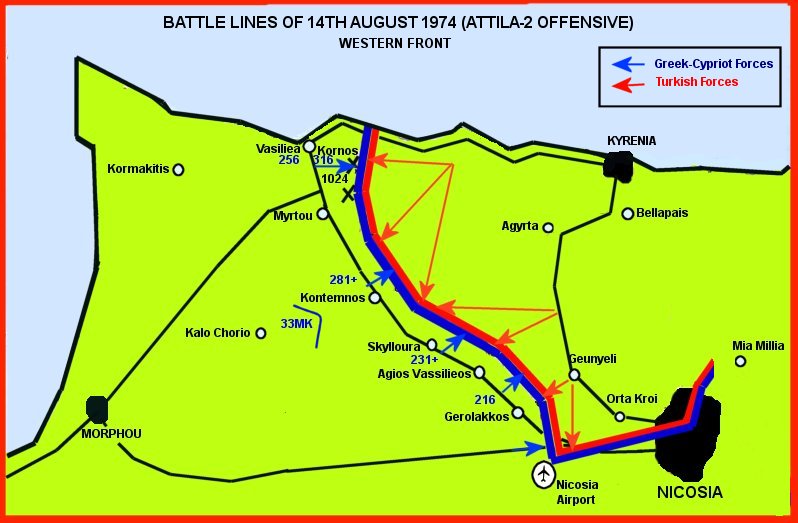
After the conflict, Cypriot representatives and the United Nations consented to the transfer of the remainder of the 51,000 Turkish Cypriots that had not left their homes in the south to settle in the north, if they wished to do so.

The United Nations Security Council has challenged the legality of Turkey's action, because Article Four of the Treaty of Guarantee gives the right to guarantors to take action with the sole aim of re-establishing the state of affairs.[57] The aftermath of Turkey's invasion, however, did not safeguard the Republic's sovereignty and territorial integrity, but had the opposite effect: the de facto partition of the Republic and the creation of a separate political entity in the north. On 13 February 1975, Turkey declared the occupied areas of the Republic of Cyprus to be a "Federated Turkish State", to the universal condemnation of the international community (see UN Security Council Resolution 367(1975)).[58] The United Nations recognizes the sovereignty of the Republic of Cyprus according to the terms of its independence in 1960. The conflict continues to affect Turkey's relations with Cyprus, Greece, and the European Union.

Background
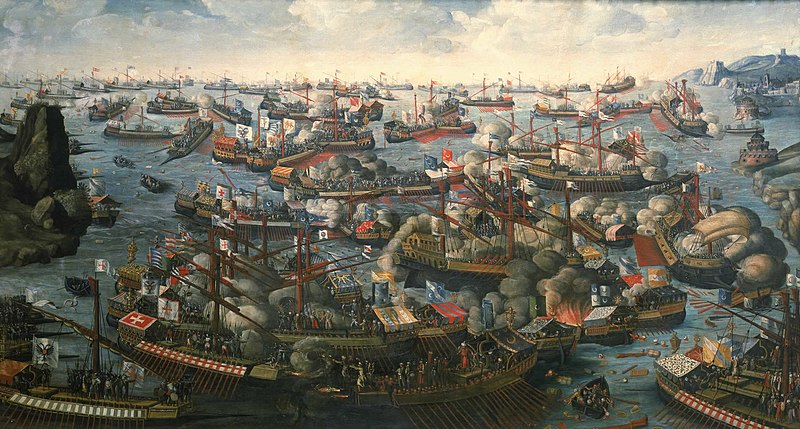
In 1571 the mostly Greek-populated island of Cyprus was conquered by the Ottoman Empire, following the Ottoman–Venetian War (1570–1573). The island and its population was later leased to Britain by the Cyprus Convention, an agreement reached during the Congress of Berlin in 1878 between the United Kingdom and the Ottoman Empire. Britain formally annexed Cyprus (together with Egypt and Sudan) on 5 November 1914[22] as a reaction to the Ottoman Empire's decision to join the First World War on the side of the Central Powers; subsequently the island became a British Crown colony. Article 20 of the Treaty of Lausanne in 1923 marked the end of the Turkish claim to the island.[22] Article 21 of the treaty gave the minority Muslims on the island the choice of leaving the island to live as Turks in Turkey, or to stay on the island as British nationals.[22]

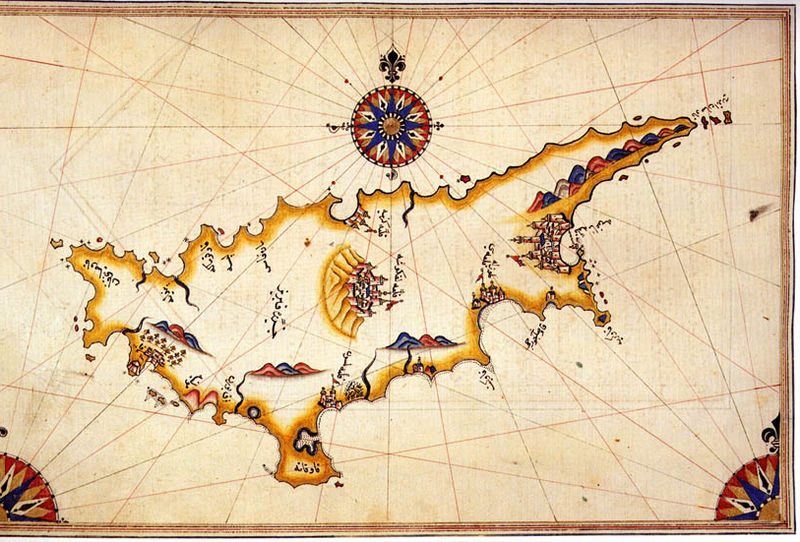
At this time the population of Cyprus was composed by both Greeks and Turks, who identified themselves with their respective "mother" countries. However, the elites of both communities shared the belief that they were socially more progressive (better educated and less conservative) and therefore distinct from the mainlanders. Greek and Turkish Cypriots lived quietly side by side for many years.[23]

Broadly, three main forces can be held responsible for transforming two ethnic communities into two national ones: education, British colonial practices, and insular religious teachings accompanying economic development. Formal education was perhaps the most important as it affected Cypriots during childhood and youth; education has been a main vehicle of transferring inter-communal hostility.[24]
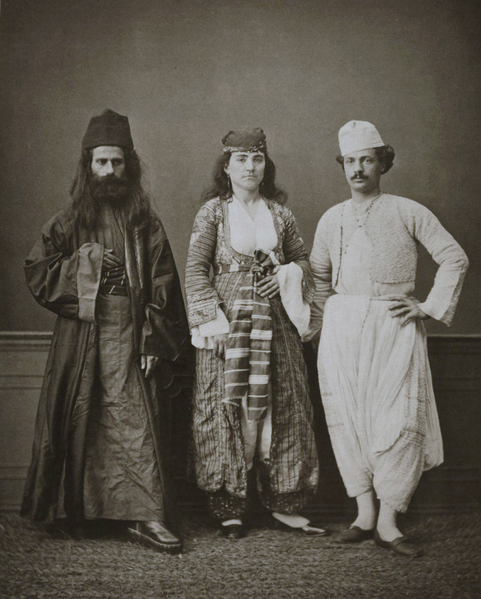


British colonial policies also promoted ethnic polarization. The British applied the principle of "divide and rule", setting the two groups against each other to prevent combined action against colonial rule.[25] For example, when Greek Cypriots rebelled in the 1950s, the colonial office expanded the size of the Auxiliary Police and in September 1955, established the Special Mobile Reserve which was recruited exclusively from the Turkish community, to crush EOKA.[26] This and similar practices contributed to inter-communal animosity.[citation needed]

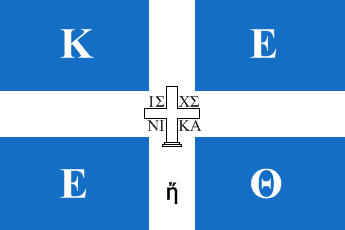
Failure to fully adopt secular practices also fostered ethnic nationalism[citation needed] as the two main ethnic groups practised their own distinct religions, with very little crossover. Although economic development and increased education reduced the explicitly religious characteristics of the two communities, the growth of nationalism on the two mainlands increased the significance of other differences. Turkish nationalism was at the core of the revolutionary program promoted by the father of modern Turkey, Mustafa Kemal Atatürk (1881–1938).,[27] and affected Turkish Cypriots who followed his principles. President of the Republic of Turkey from 1923 to 1938, Atatürk attempted to build a new nation on the ruins of the Ottoman Empire and elaborated the program of "six principles" (the "Six Arrows") to do so.[citation needed]

These principles of secularism (laicism) and nationalism reduced Islam's role in the everyday life of individuals and emphasized Turkish identity as the main source of nationalism. Traditional education with a religious foundation was discarded and replaced with one that followed secular principles and, shorn of Arab and Persian influences, was purely Turkish. Turkish Cypriots quickly adopted the secular program of Turkish nationalism.[citation needed]

Under Ottoman rule Turkish Cypriots had been classified as Muslims, a distinction based on religion. Being thoroughly secular, Atatürk's program made their Turkish identity paramount, and may have further reinforced their division from their Greek Cypriot neighbors.[citation needed]

In the early fifties a Greek nationalist group was formed called the Ethniki Organosis Kyprion Agoniston (EOKA, or "National Organisation of Cypriot Fighters").[28] Their objective was to drive the British out of the island first, and then to integrate the island with Greece. EOKA was a Greek nationalist organization and some members murdered Turkish Cypriots who were thought to have colluded with the British. EOKA wished to remove all obstacles, British, Greek Cypriot or Turkish Cypriot from their path to independence, or union with Greece. EOKA initiated its activities by planting the first bombs on 1 April 1951 with the directive by Greek Foreign Minister Stefanopoulos.[citation needed]

The first secret talks for EOKA, as a nationalist organization established to integrate the island to Greece, were started in the chairmanship of Archbishop Makarios III in Athens on 2 July 1952. In the aftermath of these meetings a "Council of Revolution" was established on 7 March 1953. In early 1954 secret weaponry shipments to Cyprus started with the knowledge of the Greek government. Lt. Georgios Grivas, formerly an officer in the Greek army, covertly disembarked on the island on 9 November 1954 and EOKA's campaign against the British forces began to grow.[29]

The first Turk to be killed by EOKA on 21 June 1955 was a policeman. EOKA also targeted Greek collaborators.[citation needed]

On 12 June 1958, eight Greek Cypriot civilians from Kondemenos village were killed by the TMT near the Turkish Cypriot populated village of Geunyeli, after being dropped off there by the British authorities. After this the Turkish government ordered the TMT to blow up the offices of the Turkish press office in Nicosia to falsely put the blame onto the Greek Cypriots and prevent independence negotiations from succeeding.[31] It also began a string of assassinations and murders of prominent Turkish Cypriot supporters of independence.[30][31] The following year, after the conclusion of the independence agreements on Cyprus, the Turkish Navy sent a ship to Cyprus fully loaded with arms for the TMT. The ship was stopped and the crew were caught red-handed in the infamous "Deniz" incident.[32] British rule lasted until 1960 when the island was declared an independent state under the London-Zurich agreements. The agreement created a foundation for the Republic of Cyprus by the Turkish Cypriot and Greek Cypriot communities, although the republic was seen as a necessary compromise between the two reluctant communities.[citation needed]

The 1960 Constitution of the Cyprus Republic proved unworkable however, lasting only three years. Greek Cypriots wanted to end the separate Turkish Cypriot municipal councils permitted by the British in 1958, made subject to review under the 1960 agreements. For many Greek Cypriots these municipalities were the first stage on the way to the partition they feared. The Greek Cypriots wanted enosis, integration with Greece, while Turkish Cypriots wanted taksim, partition between Greece and Turkey.[citation needed]

Resentment also rose within the Greek Cypriot community because Turkish Cypriots had been given a larger share of governmental posts than the size of their population warranted. In accordance with the constitution 30% of civil service jobs were allocated to the Turkish community even though at they time they only constituted 18.3% of the population.[33] Additionally, the position of vice president was reserved for the Turkish population and both the president and vice president were given veto power over crucial issues.[34] The veto power in particular made it difficult for the government to operate efficiently as any proposal had to be agreed to by both communities. The Turkish Cypriots had also vetoed the amalgamation of Turkish Cypriot and Greek Cypriot troops into the same units.[citation needed]
1963–1974

Between 21 and 26 December 1963, the conflict centered in the Omorphita suburb of Nicosia, which had been an area of tension in 1958. The participants now were Greek Cypriot irregulars and Turkish Cypriot civilians and former TMT members, known as the "fighters" during the Cyprus problem, the Turkish fighters were less powerful, outnumbered and were held down in "ghettos" from the superior Greek Cypriot side who were supplied with stored EOKA guns and eventually guns from foreign powers. Many Greek and Turkish Cypriot civilians who were caught in the crossfire and chaos that ensued over the Christmas week were killed, others were massacred by Greek or Turkish irregulars and had their homes looted and burnt down in small villages as the problem developed. The government of Turkey used these events as an excuse to cancel the residence permits of 12,000 Greek citizens living in Istanbul leading to the confiscation of their property.[citation needed]
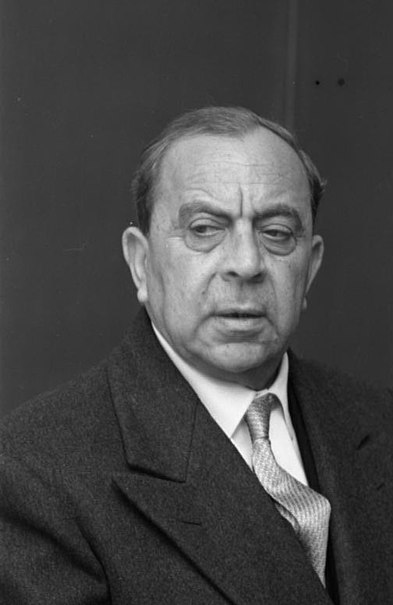
Both President Makarios and Dr. Küçük issued calls for peace, but these were ignored. Meanwhile, within a week of the violence flaring up, the Turkish army contingent had moved out of its barracks and seized the most strategic position on the island across the Nicosia to Kyrenia road, the historic jugular vein of the island. So crucial was this road to Turkish strategic thinking that they retained control of that road until 1974, at which time it acted as a crucial link in Turkey's military invasion. From 1963 up to the point of the Turkish invasion of 20 July 1974, Greek Cypriots who wanted to use the road could only do so if accompanied by a UN convoy.[citation needed]

700 Turkish hostages, including women and children, were taken from the northern suburbs of Nicosia. By 1964, 193 Turkish Cypriots and 133 Greek Cypriots were killed, with a further 209 Turks and 41 Greeks missing, presumed dead.[citation needed] The British Daily Telegraph later called it the "anti Turkish pogrom".[35]
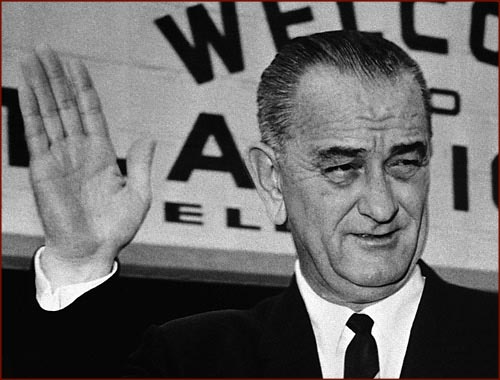
Thereafter Turkey once again put forward the idea of partition. The intensified fighting especially around areas under the control of Turkish Cypriot militias, as well as the failure of the constitution were used as justification for a possible Turkish invasion. Turkey was on the brink of invading when US president Johnson stated, in his famous letter of 5 June 1964, that the US was against a possible invasion and stated that he would not come to the aid of Turkey if an invasion of Cyprus led to conflict with the Soviet Union.[36] One month later, within the framework of a plan prepared by the US Secretary of State, Dean Rusk, negotiations with Greece and Turkey began.[37]

After 1963–64 crisis, the Turkish population began to form enclaves in different areas that were blockaded by the National Guard and were directly supported by Turkey. In response to this, their movement and access to basic supplies became more restricted by Greek forces.[38] Fighting broke out again in 1967 as the Turkish Cypriots pushed for more freedom of movement. Once again, this was only settled after Turkey threatened to invade on the basis that they would be protecting the Turkish population from possible ethnic cleansing by Greek Cypriot forces. In order to avoid this, a compromise was reached in which Greece was forced to remove some of its troops from the island, Georgios Grivas, leader of the EOKA had to leave Cyprus, and the Cypriot government lifted some restrictions of movement and access to supplies of the Turkish populations.[39]
Greek military coup and Turkish invasion
Greek military coup of July 1974
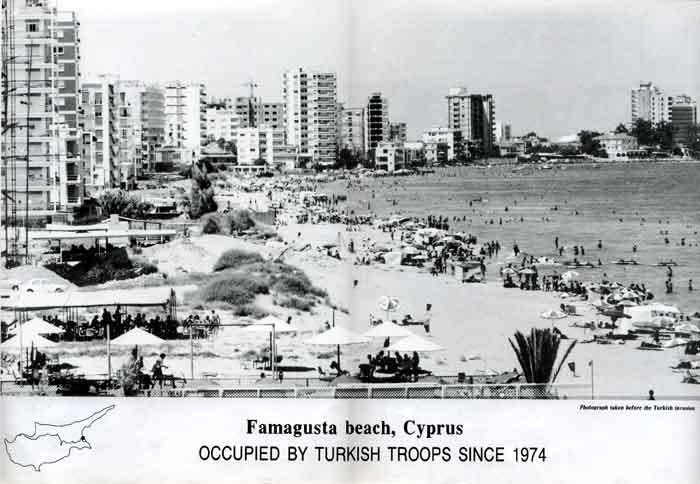
The junta had come to power in a military coup in 1967 which was condemned by the whole of Europe but had the support of the United States. In the autumn of 1973 after the 17 November student uprising there had been a further coup in Athens in which the original Greek junta had been replaced by one still more obscurantist headed by the Chief of Military Police, Brigadier Ioannides, though the actual head of state was General Phaedon Gizikis. Ioannides believed that Makarios was no longer a true supporter of enosis, and suspected him of being a communist sympathizer.[41] This led Ioannides to support the EOKA-B and National Guard as they tried to undermine Makarios.[42]
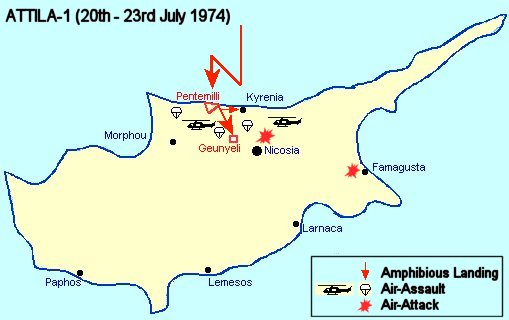
On 2 July 1974, Makarios wrote an open letter to President Gizikis complaining bluntly that 'cadres of the Greek military regime support and direct the activities of the 'EOKA-B' terrorist organization'.[citation needed] He also ordered that Greece remove some 600 Greek officers in the Cypriot National Guard from Cyprus.[43] The Greek Government's immediate reply was to order the go-ahead of the coup. On 15 July 1974 sections of the Cypriot National Guard, led by its Greek officers, overthrew the government.[41]

Makarios narrowly escaped death in the attack. He fled the presidential palace by catching a taxi after escorting a party of school children out of the building and went to Paphos, where the British managed to retrieve him by Westland Whirlwind[citation needed] helicopter in the afternoon of 16 July and flew him from Akrotiri to Malta in an Royal Air Force Armstrong Whitworth Argosy (AW.650 / 660)[citation needed] transport and from there to London by de Havilland Comet the next morning.[41]
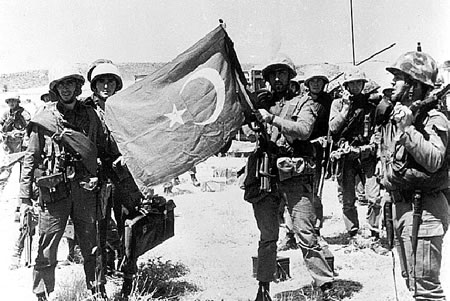
In the meantime, Nikos Sampson was declared provisional president of the new government. Sampson was a Greek ultra nationalist who was known to be fanatically anti-Turkish and had taken part in violence against Turkish civilians in earlier conflicts.[41][44]

The Sampson regime took over radio stations and declared that Makarios had been killed,[41] but Makarios, safe in London, was soon able to counteract these reports.[45] In the coup itself, 91 people were killed. The Turkish-Cypriots were not affected by the coup against Makarios; one of the reasons was that Ioannides did not want to provoke a Turkish reaction (The Tragic Duel and the Betrayal of Cyprus-Marios Adamides-2012).
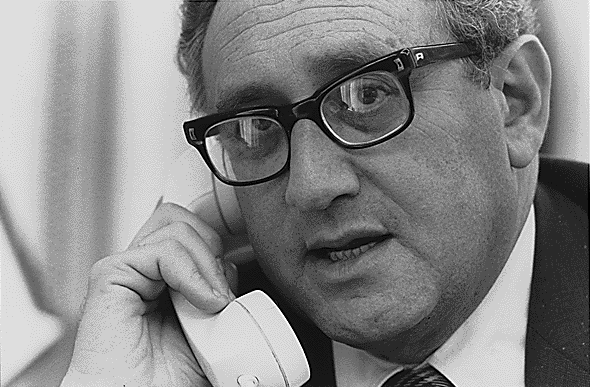
In response to the coup, US Secretary of State Henry Kissinger sent Joseph Sisco to try to mediate the conflict.[41] Turkey issued a list of demands to Greece via a US negotiator. These demands included the immediate removal of Nikos Sampson, the withdrawal of 650 Greek officers from the Cypriot National Guard, the admission of Turkish troops to protect their population, equal rights for both populations, and access to the sea from the northern coast for Turkish Cypriots.[46] These demands were rejected as they would have given Turkey an unacceptable amount of power on the island. Turkey, led by Prime Minister Bülent Ecevit, then applied to Britain as a signatory of the Treaty of Guarantee to take action to return Cyprus to its neutral status. Britain declined this offer, and refused to let Turkey use its bases on Cyprus as part of the operation.[47]


First Turkish invasion, July 1974
Turkey invaded Cyprus on Saturday, 20 July 1974. Heavily armed troops landed shortly before dawn at Kyrenia (Girne) on the northern coast meeting resistance from Greek and Greek Cypriot forces. Ankara said that it was invoking its right under the Treaty of Guarantee to protect the Turkish Cypriots and guarantee the independence of Cyprus.[48] The operation, codenamed 'Operation Atilla', is known in the North as 'the 1974 Peace Operation'.
Turkish forces primarily used a clear and hold strategy, forcing many Greek Cypriots to flee to the south.[citation needed] By the time a ceasefire was agreed three days later, Turkish troops held 3% of the territory of Cyprus. Five thousand Greek Cypriots had fled their homes.[citation needed]
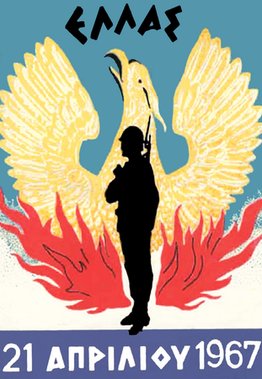
By the time the UN Security Council was able to obtain a ceasefire on the 22 July the Turkish forces had only secured a narrow corridor between Kyrenia and Nicosia, which they succeeded in widening during the next few days in violation of that ceasefire, demanded in Resolution 353.[49]


On 23 July 1974 the Greek military junta collapsed mainly because of the events in Cyprus. Greek political leaders in exile started returning to the country. On 24 July 1974 Constantine Karamanlis returned from Paris and was sworn in as Prime Minister. He decided against further military involvement as the Turkish forces were much stronger.[50] Shortly after this Nikos Sampson renounced the presidency and Glafcos Clerides temporarily took the role of president.[51]

The first round of peace talks took place in Geneva, Switzerland between 25 and 30 July 1974, James Callaghan, the British Foreign Secretary, having summoned a conference of the three guarantor powers. There they issued a declaration that the Turkish occupation zone should not be extended, that the Turkish enclaves should immediately be evacuated by the Greeks, and that a further conference should be held at Geneva with the two Cypriot communities present to restore peace and re-establish constitutional government. In advance of this they made two observations, one upholding the 1960 constitution, the other appearing to abandon it. They called for the Turkish Vice-President to resume his functions, but they also noted 'the existence in practice of two autonomous administrations, that of the Greek Cypriot community and that of the Turkish Cypriot community'. By the time that the second Geneva conference met on 14 August 1974, international sympathy (which had been with the Turks in their first attack) was swinging back towards Greece now that she had restored democracy. At the second round of peace talks, Turkey demanded that the Cypriot government accept its plan for a federal state, and population transfer.[52] When the Cypriot acting president Clerides asked for 36 to 48 hours in order to consult with Athens and with Greek Cypriot leaders, the Turkish Foreign Minister denied Clerides that opportunity on the grounds that Makarios and others would use it to play for more time.[53]
Atrocities and human right abuses
Atrocities towards the civilian Greek Cypriot and Turkish Cypriot and communities have been committed.
Against Greek Cypriots
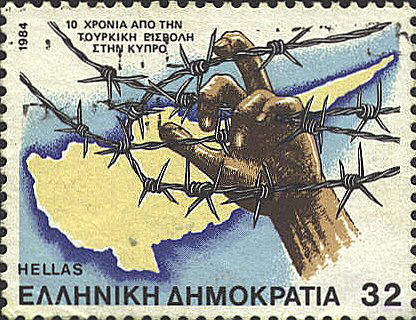
In general, Turkey was found guilty by the European Commission of Human Rights for:[59]
- Displacement of persons (13 votes against 1)
- Deprivation of liberty (8 votes against 1)
- Ill treatment (12 votes against 1)
- Deprivation of Life (14 votes against 1)
- Deprivation of Possessions (12 votes against 1)

According to historian Brad R. Roth, writing in a volume published by Oxford University Press:
This is the case of Cyprus, where external guarantors were reserved "the right to take action" to preserve a constitutional arrangement providing for power- sharing between the two ethnic groups that together comprised the Cypriot political community. In 1974, Turkey invoked the treaty as a justification (or pretext) for invading Cyprus. a move that, although plausibly provoked by predatory designs of the extra-constitutional Cypriot leadership in collusion with Greece, led to a partition of the country accompanied by measures now known as "ethnic cleansing".[74]According to historian Thomas M. Franck, writing in a volume published by Cambridge University Press:
Once its objective had been achieved by the collapse of the Greek junta, however, Turkey went on to occupy a disproportionate part of the island, precipitating large-scale ethnic cleansing The UN system, although of necessity positioning its peacekeepers along the resultant line of demarcation forged by events beyond its control, firmly rejected – and, almost three decades later still rejects — the island's forcible partition in violation of the "territorial integrity" endorsed both by the Council and Assembly.[75]According to historians David A. Lake and Donald S. Rothchild writing in a volume published by Princeton University Press:
In Cyprus, the ethnic cleansing of the northern part of the island and its secession as the Turkish Republic of Northern Cyprus has not received international recognition, beyond Turkey (Richarte 1995).[76]In 1976 and again in 1983, the European Commission of Human Rights found Turkey guilty of repeated violations of the European Convention of Human Rights. Turkey has been condemned for preventing the return of Greek Cypriot refugees to their properties.[77] The European Commission of Human Rights reports of 1976 and 1983 state the following:
Greek Cypriots who were enclaved in the occupied Karpass Peninsula in 1975 were subjected by the Turks to violations of their human rights so that by 2001 when the European Court of Human Rights found Turkey guilty of the violation of 14 articles of the European Convention of Human Rights in its judgement of Cyprus v. Turkey (application no. 25781/94), less than 600 still remained. In the same judgement, Turkey was found guilty of violating the rights of the Turkish Cypriots by authorising the trial of civilians by a military court.Having found violations of a number of Articles of the Convention, the Commission notes that the acts violating the Convention were exclusively directed against members of one of two communities in Cyprus, namely the Greek Cypriot community. It concludes by eleven votes to three that Turkey has thus failed to secure the rights and freedoms set forth in these Articles without discrimination on the grounds of ethnic origin, race, religion as required by Article 14 of the Convention.
Since the Turkish invasion, a large number of Turks have been brought to the north from Anatolia in violation of Article 49 of the Geneva Convention and hence a war crime, to occupy the homes of the Greek Cypriot refugees.[62][63]
The European commission of Human Rights with 12 votes against 1, accepted evidence from the Republic of Cyprus, concerning the rapes of various Greek-Cypriot women by Turkish soldiers and the torture of many Greek-Cypriot prisoners during the invasion of the island.[78]

Against Turkish Cypriots
Atrocities against the Turkish Cypriot community were committed during the invasion of the island. In the Maratha, Santalaris and Aloda massacre, 126 people were killed on 14 August 1974.[79][80] The United Nations described the massacre as a crime against humanity, by saying "constituting a further crime against humanity committed by the Greek and Greek Cypriot gunmen."[81] In the Tochni (Taşkent) massacre, 85 Turkish inhabitants were massacred.[82]
The Washington Post covered another news of atrocity in which it is written that: "In a Greek raid on a small Turkish village near Limassol, 36 people out of a population of 200 were killed. The Greeks said that they had been given orders to kill the inhabitants of the Turkish villages before the Turkish forces arrived."[83]
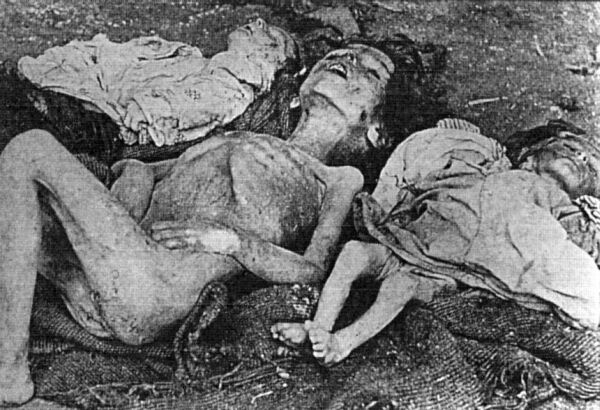
Missing persons
The issue of missing persons in Cyprus took a new turn in the summer of 2007 when the UN-sponsored Committee on Missing Persons (CMP)[84] began returning remains of identified missing individuals to their families (see end of section).
However, since 2004, the whole issue of missing persons in Cyprus took a new turn after the Committee on Missing Persons (CMP)[citation needed][85] designed and started to implement (as from August 2006) its project on the Exhumation, Identification and Return of Remains of Missing Persons. The whole project is being implemented by bi-communal teams of Greek Cypriots and Turkish Cypriot scientists (archaeologists, anthropologists and geneticists) under the overall responsibility of the CMP. By the end of 2007, 57 individuals had been identified and their remains returned to their families.[citation needed]
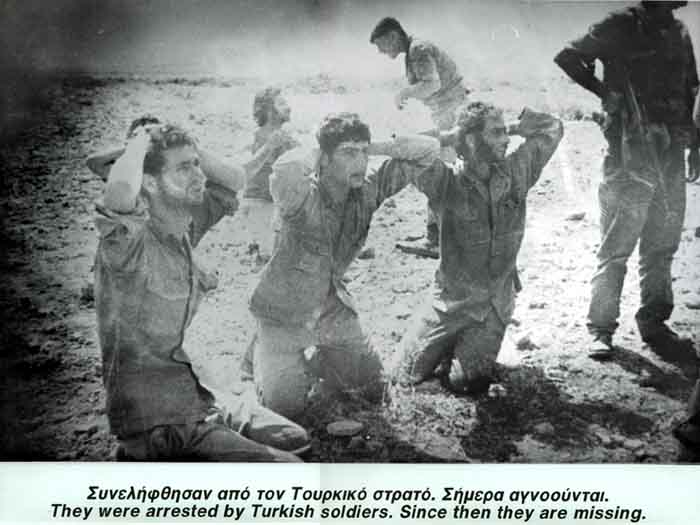
The missing persons list of the Republic of Cyprus confirms that 83 Turkish Cypriots disappeared in Tochni on 14 August 1974.[86] Also, as a result of the invasion, over 2000 Greek-Cypriot prisoners of war were taken to Turkey and detained in Turkish prisons. Some of them were not released and are still missing. In particular, the Committee on Missing Persons (CMP) in Cyprus, which operates under the auspices of the United Nations, is mandated to investigate approximately 1600 cases of Greek Cypriot and Greek missing persons.[87]
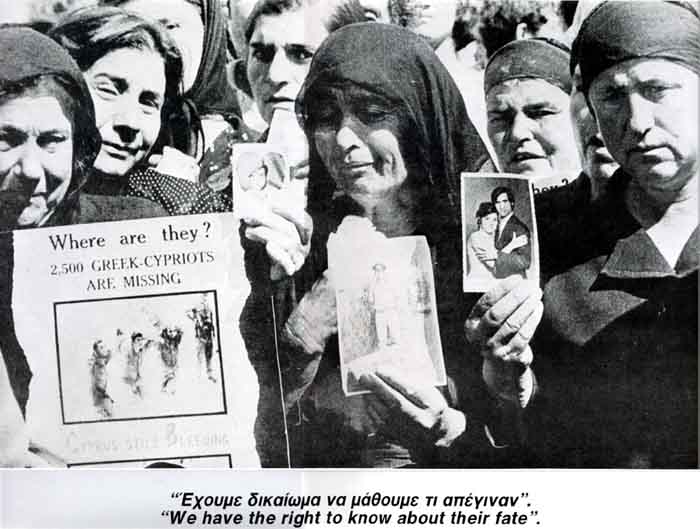
Destruction of cultural heritage
In 1989, the government of Cyprus took an American art dealer to court for the return of four rare 6th-century Byzantine mosaics that survived an edict by the Emperor of Byzantium, imposing the destruction of all images of sacred figures. Cyprus won the case, and the mosaics were eventually returned.[88] In October 1997, Aydın Dikmen, who had sold the mosaics, was arrested in Germany in a police raid and found to be in possession of a stash consisting of mosaics, frescoes and icons dating back to the 6th, 12th and 15th centuries, worth over $50 million. The mosaics, depicting Saints Thaddeus and Thomas, are two more sections from the apse of the Kanakaria Church, while the frescoes, including the Last Judgement and the Tree of Jesse, were taken off the north and south walls of the Monastery of Antiphonitis, built between the 12th and 15th centuries.[89]
According to a Greek Cypriot claim, since 1974, at least 55 churches have been converted into mosques and another 50 churches and monasteries have been converted into stables, stores, hostels, or museums, or have been demolished.[90] According to the government spokesman of the de facto Turkish Republic of Northern Cyprus, this has been done to keep the buildings from falling into ruin.[91]

In January 2011, the British singer Boy George returned an 18th-century icon of Christ to the Church of Cyprus that he had bought without knowing the origin. The icon, which had adorned his home for 26 years, had been looted from the church of St Charalampus from the village of New Chorio, near Kythrea, in 1974. The icon was noticed by church officials during a television interview of Boy George at his home. The church contacted the singer who agreed to return the icon at Saints Anargyroi Church, Highgate, north London.[92][93][94]
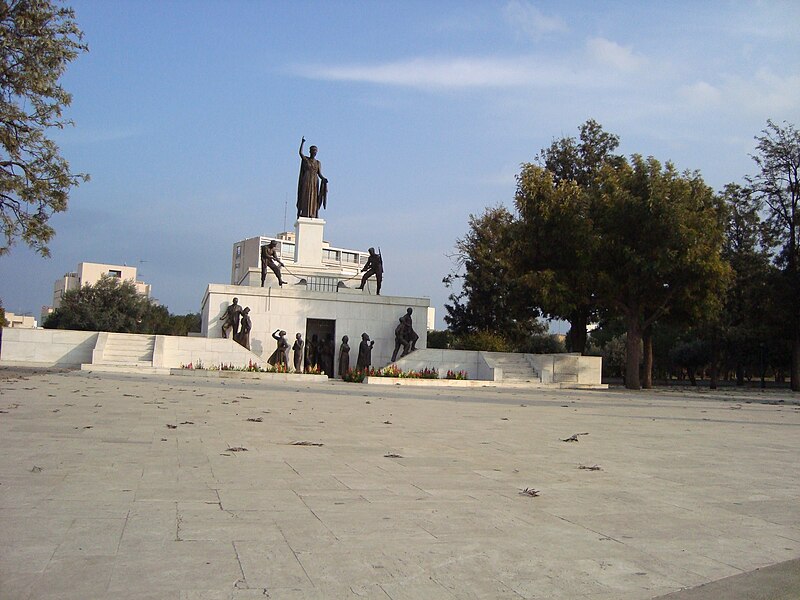
Turkish settlers
As a result of the Turkish invasion, the Parliamentary Assembly of the Council of Europe stated that the demographic structure of the island has been continuously modified as a result of the deliberate policies of the Turks. Following the occupation of Northern Cyprus, civilian settlers from Turkey began arriving on the island. Despite the lack of consensus on the exact figures, all parties concerned admitted that Turkish nationals began systematically arriving in the northern part of the island in 1975.[95] It was suggested that over 120,000 settlers were brought into Cyprus from mainland Turkey.[95] This was despite Article 49 of the Fourth Geneva Convention, which prohibits an occupier from transferring or deporting parts of its own civilian population into an occupied territory.
UN Resolution 1987/19 (1987) of the "Sub-Commission On Prevention Of Discrimination And Protection Of Minorities", which was adopted on 2 September 1987, demanded "the full restoration of all human rights to the whole population of Cyprus, including the freedom of movement, the freedom of settlement and the right to property" and also expressed "its concern also at the policy and practice of the implantation of settlers in the occupied territories of Cyprus which constitute a form of colonialism and attempt to change illegally the demographic structure of Cyprus".


In a report prepared by Mete Hatay on behalf of PRIO, the Oslo peace center, it was estimated that the number of Turkish mainlanders in the north who have been granted the right to vote is 37,000. This figure however excludes mainlanders who are married to Turkish Cypriots or adult children of mainland settlers as well as all minors. The report also estimates the number of Turkish mainlanders who have not been granted the right to vote, whom it labels as "transients", at a further 105,000.[96]
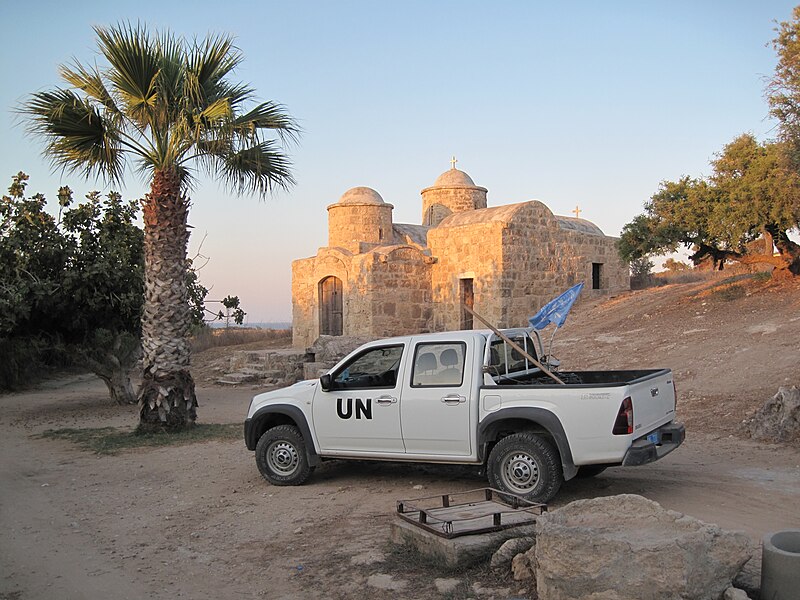
Taken from and references on: http://en.wikipedia.org/wiki/Turkish_invasion_of_Cyprus [14.08.2014]




No comments:
Post a Comment